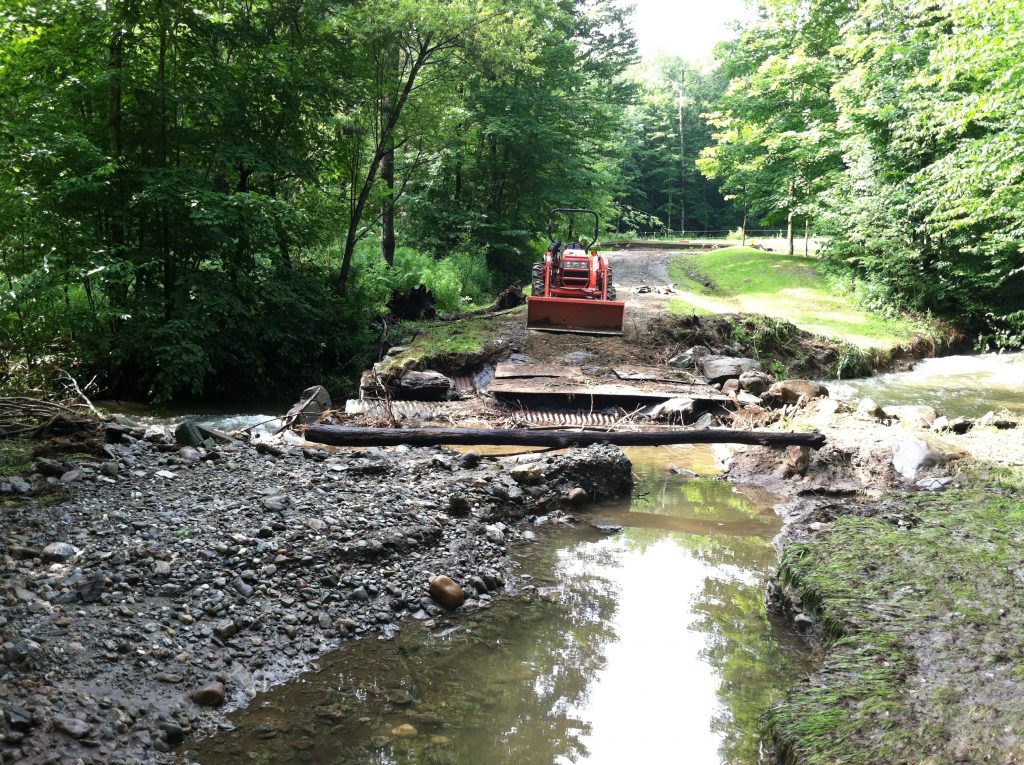Winooski Natural Resources Conservation District
For Immediate Release, October 9, 2017
Contact: Corrina Parnapy, District Manager
Winooski Natural Resources Conservation District
(802) 778-3178 – info@winooskinrcd.org
RE: Brook Trout and Culverts
With the changes of the seasons, our forests are filled with vibrant colors. Our important trees are not the only colors to see this time of year; our native brook trout are brightening and getting ready to spawn. Brook trout, as well as other fish and aquatic organisms that live within our many streams and rivers need to be able to move upstream or downstream for food, to reproduce, to stay in areas with the best flow, temperature and water quality. We call this connectivity; that all areas of habitat are interconnected and available.
One of the biggest impairments to connectivity is undersized or perched culverts that are used to channel water under our roads. These culverts not only reduce connectivity, diminishing habitat for aquatic organisms, they cause flooding and eroding that allows sediment and phosphorus into our waterways. When these undersized culverts clog, they can cause the road to washout, resulting in costly emergency repairs and continual maintenance. An undersized culvert can erode downstream causing a pool of water at the outflow, leaving the culvert hanging in the air; this is called a perched culvert. Above the culvert the force of the water, not able to make its way through the undersized hole will erode at the bank, and flood over the road. Replacing or retrofitting these culverts not only benefits aquatic organisms, but increases flood resiliency, reduces phosphorus and sediment loading and reduces the costly maintenance and repairs to our municipalities and private citizens. These projects are called Aquatic Organism Passage Projects or AOP’s.
The Winooski Natural Resources Conservation District (WNRCD) works on AOP’s on private property as well as on municipal roads. In summer 2017 the WNRCD worked with partners on the replacement of 2 AOP’s.
The WNRCD partnered with the Town of Huntington and the US Fish and Wildlife Services to replace an undersized, perched culvert with additional funds through the Vermont Department of Transportation Better Backroads Program. The culvert was a barrier to fish passage and was contributing considerable sediment and phosphorus to the river. By replacing and realigning the culvert, the project allowed brook trout and other aquatic organism’s access to an additional 3.4 miles of habitat and stabilized the eroding bank which needed costly repairs yearly.
The WNRCD in addition partnered with a private landowner, the US Fish and Wildlife Services with additional funds awarded to the New England Interstate Water Pollution Control Commission by the Great Lakes Fishery Commission in support of the Lake Champlain Basin Program, to replace three undersized culverts with a bridge. The project reduces between 20-28 cubic yards of fine material from entering the stream yearly; in addition it opens 3 miles of habitat and an additional 10.78 acres of wetland to aquatic organisms. The project increases local flood resiliency, reduces the costly fixes that were needed after rain events and opens habitat for aquatic organisms.
The Vermont Fish and Wildlife Department has many useful resources for those interested in identifying or implementing AOP’s including guidance manuals, assessment protocols and screening tools. For more information on partnering with the WNRCD on an AOP or other natural resource project, please visit: www.winooskinrcd.org
The Winooski Natural Resources Conservation District is one of 14 conservation districts throughout Vermont. It encompasses all of Chittenden and Washington County as well as parts of Orange County (Orange, Williamstown and Washington). The district relies on grants and individual donations to complete its conservation work. The WNRCD focuses its resources on completing conservation projects within the areas of agricultural assistance, forestland enhancement, urban conservation and watershed stewardship.







